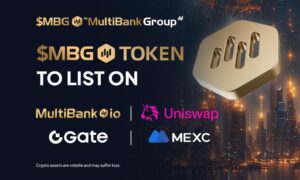 Peter Ludvigsen is the CEO of Blockshipping, a blockchain based, global shared container platform, transforming the global container shipping industry.
Peter Ludvigsen is the CEO of Blockshipping, a blockchain based, global shared container platform, transforming the global container shipping industry.
1) Could you please tell us about yourself?
I have 40 years’ experience in the shipping industry possessing a unique combination of Shipping Industry background (Liner Shipping, Operations Management, Ports and Container Terminals), with CIO experience, and IT Program Management along with entrepreneurial experience from having founded and managed Bestshore Business Solutions UK Limited for a number of years.
My background and experience can be summarized as follows:
- 40 years in total of background in large International Shipping Companies and Management Consulting (Shipping and Container Terminal development projects)
- Extensive experience in E-Commerce, ecosystems and business dev opportunities in connecting Container Carriers ERP, Terminals TOS with landside operators
- 8 years combined experience as CIO for Maersk Line Europe Region, UASC, Ports America and INTTRA
- 5 years’ combined experience with UASC initially in roles as Management Consultant, Interim CIO and later permanent Group CIO responsible for large strategic IT Projects
- Extensive IT projects and Program management experience for large Enterprise IT Projects
- Proven track record in ensuring successful delivery of large and complex solutions
- Strong background in IT procurement and management of large IT vendors.
- Managing Director of Terminal/Operations/Intermodal company (120 FTE) in Taiwan responsible for all operations of large North European Carrier including development of large Container Terminal in Kaohsiung
2) What is Blockshipping and what is the Global Shared Container Platform (GSCP)?
Blockshipping is a Scandinavian company based in Copenhagen, Denmark. Blockshipping is developing The Global Shared Container Platform (GSCP) that will enable a savings potential for the global container industry at the tune of USD 5.7 billion per year by smarter handling of intermodal freight containers. Blockshipping was founded in 2017 by Danish Peter Ludvigsen, who has 40 years of experience from key positions in international container shipping.
Blockshipping’s Global Shared Container Platform (GSCP) is designed to make key processes in the global handling of containers significantly more efficient and thereby solve some of the most important problems in the container shipping industry today. First and foremost, the purpose of the GSCP platform is to provide a complete blockchain enabled container asset registry (like a ship register) where the full global inventory of containers (approx. 27 million units) are registered along with real-time locations of every single container around the world. The goal within 3-4 years is to achieve a 60% market coverage with 16 million container units in the GSCP blockchain registry. The GSCP platform will enable a savings potential for the global container industry of at least USD 5.7bn per year. Furthermore, the platform is expected to reduce the global CO2 emission by at least 4.6m tons yearly (please see our white paper on www.blockshipping.io for more details).
3) What inspired you to build a blockchain-based shipping container management solution?
The idea for the GSCP Platform is more than 20 years old and I looked at it when the internet was introduced in the mid-nineties.
The process entailed developing a detailed business case which I presented to several senior executives in the shipping industry and they were very positive and very supportive and they encouraged me to continue to pursue the idea of developing a global IT platform. Some of these senior execs from the shipping industry were truly wondering how come no one has done this before.
The main reason for a platform like GSCP have not been developed earlier is that the Blockchain technology now available delivers the missing ingredient of being able to generate trust among carriers/stakeholders without letting go of data-ownership.
4) What are some of the problems you see in the international shipping industry today particularly with regards to container shipping?
The key pain points in the shipping industry today:
- Over capacity or over supply of container ships leading to deterioration of freight rates – a consistent trend for the past probably 8 years.
- Utilization of shipping containers is poor and inefficient leading to an inflated stock of containers.
- Unnecessarily high empty container intermodal cost burdering the container shipping lines.
- Unnecessarily high empty container repositioning cost which again is burdening global container lines.
- Old antiquated systems with huge legacy that the container lines have little appetite to modernize/replace and limited financial resources to properly address.
5) How will Blockshipping affect the container shipping industry and how will it affect all the players involved; steamship lines, railways, NVOCC’s and shippers?
The impact will be significant in many areas. First, the use of the Global Shared Container Platform will enable global Container Carriers to achieve very large cost savings which they have not been able to achieve in the past. The cost savings estimate at USD 5.7 Bn per annum are savings which are only attainable if the Container Carriers are willing to collaborate in sharing equipment. The savings will materialize in three different areas:
- Reduction in empty container repositioning
- Reduction in global container fleet
- Reduction in empty haulage / intermodal cost
There could be several different impacts on maritime logistics. There are some service providers in the shipping industry which profit on the lack of transparency and visibility in the global supply chain. The GSCP platform will provide a lot more visibility which will benefit BCOs and the Container Carriers. Container Carriers will be able to manage and operate their containers much more efficiently which result in better service to the end customers and cost savings for the carriers.
A long-term vision of GSCP is that container carriers will not need to own their own containers in the future but can use the GSCP to ensure availability in completely the same way as if they were leased or owned. This will allow container carriers to offload significant financial assets tied up in containers.
6) How does blockchain technology help Blockshipping accomplish this?
The use of Blockchain Technology enables global container carriers who are fierce competitors to use a system where the trust is built into the system. Carriers and other stakeholders can start to share containers through GSCP a neutral third-party platform that safeguards data and transactions using blockchain technology. This creates the lacking ingredient of trust between parties that has been missing in earlier attempts to implement container sharing in high scale volume.
7) Can you tell us more about the technology and components of Blockshipping ecosystem that make it function?
Since the decision early on in the project to shortlist COCO Framework as one of the likely Blockchain technologies we would adopt on the GSCP Platform we have since then had a number of meetings and workshops with Blockchain technology experts and vendors. After the ICO is completed we will initiate two POCs to validate the Blockchain technology selection.
The blockchain market is changing rapidly with currently more than 100 platforms. We are therefore designing Blockshipping for being loosely
coupled to the underlying blockchain platform, so we are flexible to adjust the solution for the next generation of blockchain platforms.
In our analysis of different blockchain platform the most important characteristics we have identified a potential future winner should have is:
- Blockshipping is a permissioned Blockchain solution and our main goal is to facilitate the confidential sharing of synchronized information among a group of known and trusted network participants
- Open source — to ensure a diverse ecosystem and network effect to accelerate adoption
- Modular architecture
- Global scale — scalability, performance and efficiency are essential
- Documentation – An accurate and precise specification of the protocol
- Several implementations to ensure the protocol is well-defined and has been hardened by being exposed on the open internet
- Smart contract possibility
- Good governance and decision-making structure
- Good development tools
Although none of the platforms we have looked at completely fulfilled all our requirements then Hyperledger Fabric is definitely one of the most mature platforms and is therefore one of the BC platforms that we have shortlisted. But as mentioned, we are designing Blockshipping GSCP platform not to be too dependent on the underlying BC platform so our success will not depend on the selection of the right platform today.
8) Can you describe the difference between the Container Crypto Coin (CCC) and Container Platform Token (CPT) along with how you can ensure the value of CPT remains stable relative to USD?
The CPT is a utility token which will be used for settlement of services ordered and paid for on the GSCP Platform (saving bank fees and rate of exchange fluctuations for users). The CPT is pegged to the US Dollar which is the predominant currency in the shipping industry. The CPT will not be traded on any exchanges because that would defeat its purpose.
The purpose of the CCC token on the other hand is to raise money for the development of the GSCP Platform. In return for buying the CCC token buyers gets a revenue share hence the name revenue share token. The CCC will be traded on exchanges and will fluctuate in value as all cryptocurrencies do. The two key differentiators of the CCC token is that it will be propped up by the market maker fund where a floor price is guaranteed and irrespective of how the CCC may fluctuate in value there will be a monthly transfer of revenue from the GSCP platform to the CCC which is intended to help appreciate the value of the CCC token. For more details on the two tokens please refer to the section named Token Characteristics on page 27 in the ICO whitepaper.
Clearing of CPT tokens will always be done in USD and conversion to local currency will be done on the day of clearing at the global interbank exchange rate published via Clear.Bank and based on minimal transaction fees. More information can be found here: https://www.clear.bank/infrastructure.
9) How much do you intend to raise in the Blockshipping GSCP Token Sale and what are the steps for contributing?
Our hard cap is USD 24.8M. The amount based on careful calculations of the costs of:
- a full development of the GSCP platform during the next three-year period, and acquisition of software and existing solutions to accelerate the development and deployment of the platform
- the running and maintenance costs of the platform in the initial period before reaching break-even,
- and costs of marketing the platform across the shipping industry to obtain the necessary critical mass of users in due time.
10) What were some of the biggest challenges you encountered while working to launch your ICO?
Since this is the first ICO we of course had to operate in uncharted territory, but we have been supported throughout the whole process by Kammeradvokaten/Poul Smith which is the biggest and most prestigious law firm in Denmark.
11) What’s going to happen to Blockshipping after the token sale concludes and what where do you see things in 5 years?
As soon as the ICO is completed hopefully sooner than the full month we have allocated we are kicking off 3 to 5 platform and product development projects in parallel.
In parallel the Blockshipping organization will be slightly expanded up to ensure that we can deliver the products our product roadmap and achieve our goals.
12) What are your marketing and sales strategies to achieve that?
This is being developed in more details at the moment. A commercial strategy is being developed in parallel with the MVPs. We are already for some time establishing contacts and relationship with key players in the industry. We expect to launch a number of advisory boards where companies that decide to support the GSCP will be offered seats. We are also having contacts with leading consultants to get their take on efficient BtB strategies to apply in this market.
13) Could you tell us a little about your team and customer support?
The basic strategy is to have a small but experienced yet agile team to manage and coordinate all activities. We will partner with leading and competent players in the industry and use already established standards wherever possible but also participate in developing new standards where we see the need. We expect to launch an updated mng team within the next few weeks. Customer support will be established in cost-effective locations around the world.
14) Do you have more information for our readers?
Please visit our website: https://www.blockshipping.io/.
Join our Telegram Community: https://t.me/blockshipping
Click here to download our whitepaper.



































